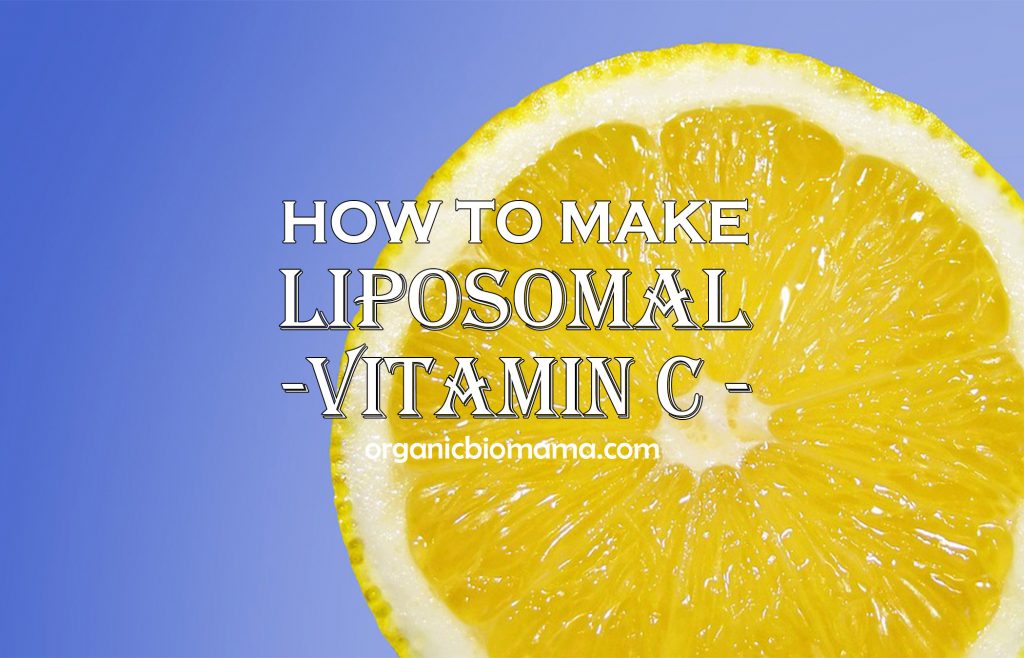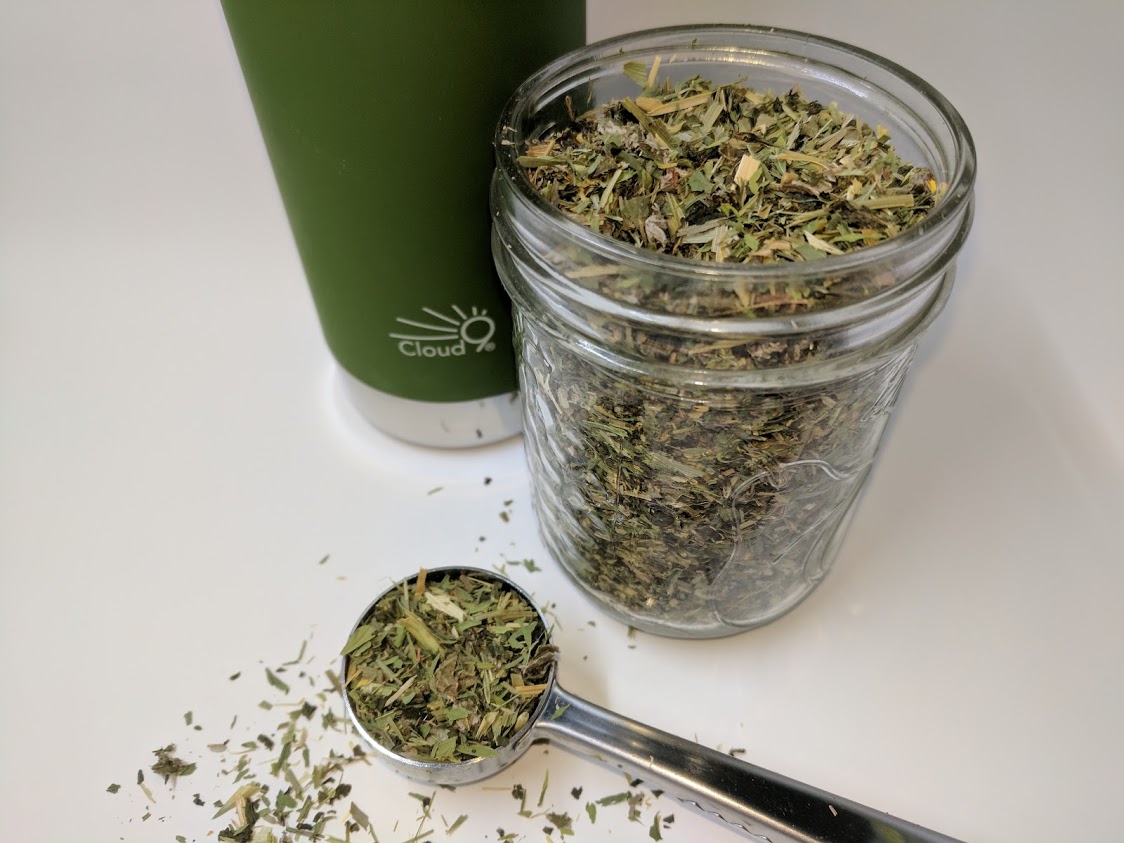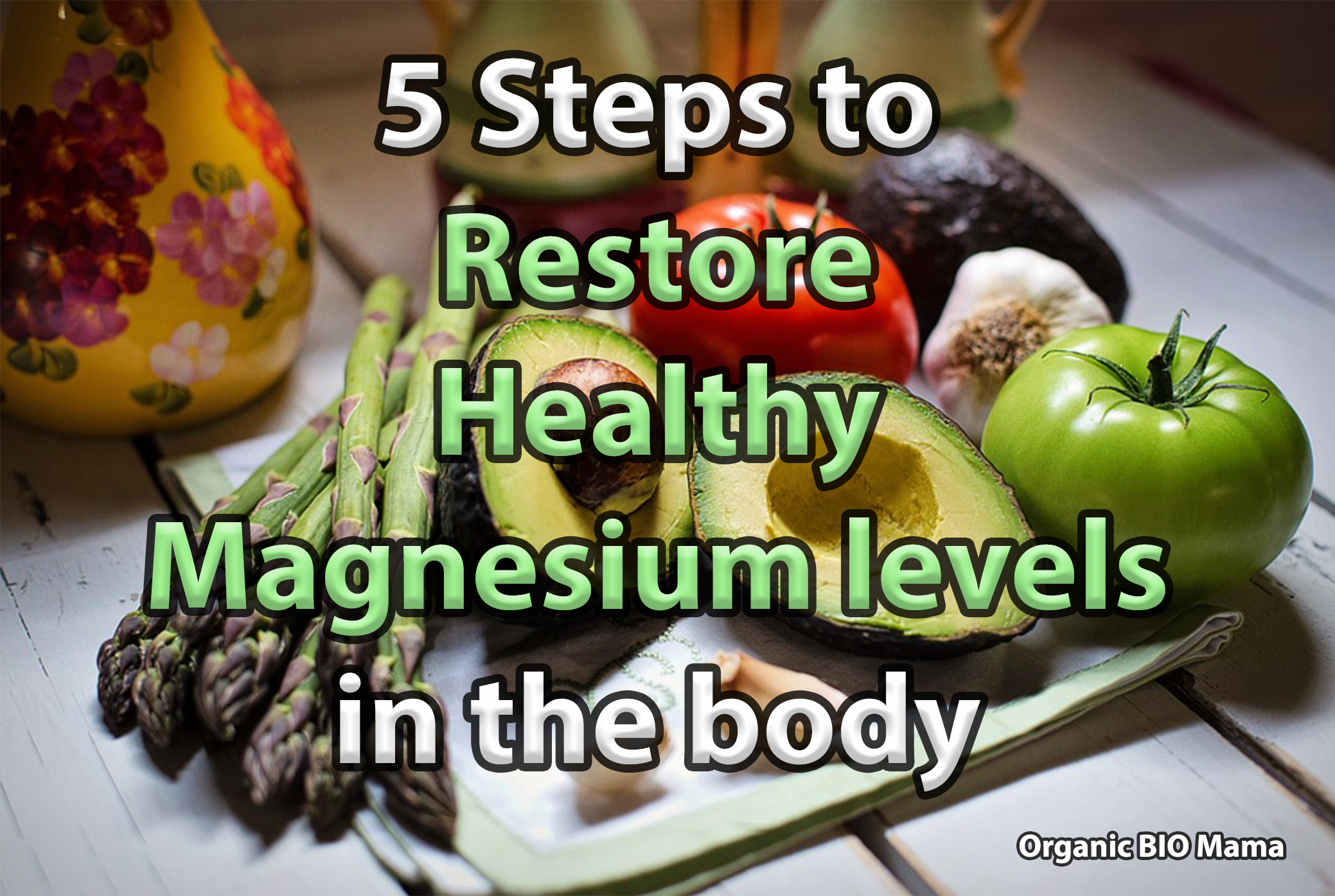Liposomal Vitamin C is the most absorbable form of vitamin C. However, it can be very costly if you use it in therapeutic amounts frequently. On the other hand, liposomal vitamin C is not hard to make and can be very cost-effective if made at home. However, this method does not guarantee 100% encapsulation of vitamin C.

Why Liposomal (Encapsulated, Lipo-spheric) Vitamin C?
Liposomal Vitamin C provides much higher absorption of the vitamin by our cells compared to other forms of the vitamin. Liposomal formulation enhances the ability of vitamin C to absorb directly into cells increasing the effectiveness. Some experts such as Thomas Levy, MD, JD, say that 6 grams of liposomal vitamin C can provide equal benefits of 50 grams of intravenous vitamin C. Intravenous vitamin C treatments are expensive and time-consuming while making liposomal vitamin C is much cheaper and saves the time. So why not make our own liposomal vitamin C?
Homemade liposomal vitamin C makes about 50-85% encapsulation according to a crude test, which is still an excellent uptake of vitamin C. Even at 50% encapsulation the person gets at least as much sodium ascorbate as if a person were to receive it in an IV.
Which one to use: Sodium ascorbate or Ascorbic acid?
Sodium ascorbate is the buffered form of ascorbic acid. Ascorbic acid is too acidic (4.2 pH) and sodium ascorbate is less acidic (6.9 pH). Since the body is slightly alkaline (7.35-7.45 pH), it is best to use the less acidic form of vitamin C to encapsulate.
When you take straight ascorbic acid into the bloodstream, the body will have to neutralize the Ph by taking minerals from your bones, teeth, and organs to balance it.
It is best to use sodium ascorbate only and not other mineral ascorbates (like calcium ascorbate, zinc ascorbate, or magnesium ascorbate) to make a liposomal vitamin C as the mineral can reach toxic levels in the bloodstream otherwise.
You can make your own sodium ascorbate using ascorbic acid and sodium bicarbonate (baking soda) at home: How to make Sodium Ascorbate at Home
How much Sodium in this Homemade Liposomal Vitamin C?
One ounce of homemade liposomal vitamin C contains about 100 mg of sodium.
If you are worried about the higher sodium intake, you can use ascorbic acid on a short-term basis. Just keep in mind that ascorbic acid will acidify the blood.
Homemade Liposomal Vitamin C (Recipe)
(Makes about 48 oz)
Ingredients:
- 3/4 cup (100 gr) Lecithin (Sunflower Lecithin or Non-GMO Soy Lecithin)
- 30 oz (890 ml) Distilled water
- 1/4 cup (48 gr) Sodium Ascorbate powder
- 12 oz (350 ml) Distilled water
Equipment:
- Large Ultrasonic Jewelry Cleaner (which one to get?)
- Blender with an ultra-low stirring speed
- One quart canning jars with lids – 2 pcs
- Pint jar with lid (for mixing ascorbic acid) – 1 pc
- Measuring cups
- pH test strips (optional)
- Plastic spoon (or straws) for stirring
Instructions:
- Pour 30 oz (890 ml) of warm water into the blender cup.
- Turn the blender on the lowest setting.
- Add lecithin to the stirring water in the blender.
- Stir on low until lecithin melts (about 5-10 minutes).
- In a separate (pint) jar mix 12 oz (350 ml) water and 1/4 cup sodium ascorbate powder. Put on the lid and shake till dissolved.
- Pour the ascorbate solution into lecithin mixture while still blending on low. Let it blend for 5 minutes.
- Pour lecithin and sodium ascorbate solution into the ultrasonic cleaner (to the max fill line). It is best to pour the solution into a glass flask and then place the flask into an ultrasonic cleaner to avoid leaching any unwanted substances from stainless steel.
- Set the ultrasonic cleaner for longest cycle available on the machine. Total homogenizing time is approximately 30 minutes.
- Stir fairly often using a plastic spoon or a soup ladle. Stirring keeps lecithin moving and encapsulating the sodium ascorbate efficiently. The more you stir the more homogenized is the final solution which is exactly what we want from our liposomal vitamin C. Stirring is critical for encapsulation process.
- Pour the ready solution into a labeled glass jar. Tighten the lid and store in a refrigerator for up to two weeks. The solution can be used right away.
- If you are using a sunflower lecithin the final product color is creamed coffee. Otherwise, it can be creamy bright yellow or lemon color. The solution will not be thick. If you want a thick solution you can use less water. See the notes.
Notes:
- To make a thicker liposomal vitamin C solution use less water (use about 1/3 amount mentioned in this recipe).
- Lecithin to ascorbate volume ratio should be 3 to 1. For example, you can use 3/4 cup of lecithin and 1/4 cup of sodium ascorbate.
- Make sure to completely dissolve the sodium ascorbate in water before you add it to the lecithin mixture.
- Liposomal vitamin C may taste like soap. To make it taste better you can add it to an orange juice or other juices and then drink.
Proportions for a smaller batch
To make 16 oz liposomal vitamin C:
- 1/4 cup (33 g) Lecithin
- 10 oz (300 ml) Distilled Water
- 1 Tbsp + 1 tsp Sodium Ascorbate
- 4 oz (120 ml) Distilled Water
How to test Homemade Liposomal Vitamin C for percent Encapsulation (if you used Ascorbic Acid)
Brooks Bradley method of testing encapsulation percent:
- Put 4 oz of finished homemade liposomal vitamin C into a 12 oz jar.
- Mix 1 oz of distilled water with 1/4 teaspoon of sodium bicarbonate. Let it dissolve completely.
- Pour sodium bicarbonate solution into the liposomal vitamin C mixture. Stir.
Results:
An unencapsulated ascorbic acid reacts with sodium bicarbonate and forms a foam.
- If the foam is 0.5” or less, it means the encapsulation rate is 50%.
- If the foam is 3/8” or less, it means the encapsulation rate is 60%.
- If the foam is 1/8” or less, it means the encapsulation rate is 75%.
Source: Cheryl Hines “How to make Liposomal Vitamin C”
Related: “How to Make Whole Food Liposomal Vitamin C using Rosehip powder”



How much of this recipe is a daily dose?
Hi, Rachel! I myself take 1000mg when I feel sick or in need of some immune boost. I hope it helps, and thank you for visiting! Feruza.
Hi OBM, I believe what Rachel wanted to know (& me too!) is how much recipe is needed for 1000mg dose? Thanks in advance.
Hi, Carol! If you follow the exact recipe, 1 oz of this liquid liposomal vitamin C will contain 1000 mg of Sodium Ascorbate (vitamin C).
Hi there – is it true that Liposomal does not have a very long storage life – i made some last week and have noticed it has turned quite golden to what it was. Would this be oxidisation and is it still safe to take? Thank you. Aileen.
I keep mine in the refrigerator, and it keeps its original color and taste for weeks. When I travel and it is not refrigerated, it gets darker in just a couple days.
no one has ever died from taking too much vitamin c.
the “dose” may range from a shot glass (@2.5 gram) a day, up to
10 times that amount to fight off an illness. the best way to know
is when you reach bowel tolerance. which means exactly what you
think it means. loose stool.
Dosage is very flexible and individual.
Rachael, see a book that is very good about Vitamin C and other vitamins called Doctor Yourself. The author, Andrew Saul is a Vitamin C dosing expert and explains how to decide how much to take based on how you are feeling. Sick people need more but there is a way your body tells you that you have taken enough as it were.
hello! For several years I made Liposomal C, following a recipe very similar to yours. I bought a high scale jewelry cleaner to make sure I got the job done correctly. With Liposomal c, a person should be able to take high dose, 10 grams or more with no bowl intolerance. I was never able to do that with mine. I could
only take 2 grams at most, which told me my Liposomal c was not really encapsulated. I was in a DIY yahoo support group with lots of smart people on there and we shared experience and knowledge. In sprite of that, I felt that I never had success, so I quit. I would love to be able to make my own that is really encapsulated, that really works. Any suggestions?
Thank yu for taking the time to explain that
Dear Biomama,
Thank you so much for publishing this!! ?
I have a few questions that i’d love your answers to if you don’t mind…?
1. I have heard that making liposomal vitamin c requires a day and a bit. Your method doesnt seem to require this. Do you know why i might have heard of this timeframe?
2. I have also read that the sonic cleaner can be one thst doesnt need to heat up…? (And the one you have suggested does have the capacity to heat – is that just part of it and you dobt use the heating function?)
3. It seems to be important not to let the solutions come into contact with metal – does this mean the glass jars need to have plastic lids? (And why is this?)
4. The price of cleaners ranges from $30 to $200 or so – why wouldnt i get a $30 one? What are the cleaner requirements for making the liposomal vitamin c?
Thank you so much,
Melissa
Hi, Melissa!
First of all, thank you for visiting my page! It is my pleasure to answer all of your questions. I am not an expert in making liposomal vitamin C. I am learning just like you, but will share my thoughts about the issues you mentioned.
1. To my knowledge, there are several methods of making liposomal vit.C at home, and some of them use a blender which requires a day or more to make Lip.Vit.C. Some premix vitamin C with water beforehand to enhance the absorption of vit.C by water(?). The above method is not exactly mine, I just found it more convenient. This does not mean this method is the best.
2. The sonic cleaner that I recommend has a no heat button as well, so you do not have to use the heat. The heating option is for cleaning jewelry or other items. There is a separate glass beaker that you can use to make liposomal vitamin C, and you can use the stainless part for cleaning other items.
3. The solution should not come in contact with metal during preparation, as we do not want other leached substances to be encapsulated during the process. And of course, it is best to store the solution in glass, because vitamin C has some acidity that can react with plastic. Not sure about the plastic lid, but I would not worry about the lid being plastic. A plastic lid is much better than a metal lid. I try to never use metal lids with any liquid food items, as metal lids tend to leave a very weird aftertaste.
4. Yes, why not? The price does not make the product superior. If the cleaner has a no-heat option, and if you can use it with a glass flask I would get that. The ultrasonic cleaner to make liposomal vitamin c that I recommend is convenient, it has its own 1000 ml glass beaker, it allows you to control the temperature of the mix, is easier to clean, and has a timer.
I hope it helps, Feruza.
Thank you very much for posting and maintaining this information. It is invaluable. It is liberating.
I first heard about Vit.C mega dosing just over thirty years ago, from family members who were professional medics. Incredible how badly, how consistently, this life saving information has been denounced – for the sake of personal enrichment – by people who supposedly have humanity’s best interests at heart.
Hi, Quantrille! Thank you for visiting my page. I am so glad it’s being helpful!
Hello Organic BioMama,
Appreciate your instructions, I’ve been making liposomal vitamin c for some time now. I also tried tumbling (yes, in a glass jar in a rock tumbler) powered sunflower lecithin with powdered sodium ascorbate, dry-no water. My questions is: will the lecithin encapsulate the ascorbate, being dry, if it’s tumbled for a day or so? I have a powder that’s well mixed but doubt if it’s encapsulated. Is there a way to make dry liposomal vitamin c at home so it can be put into capsules?
Hi. Gary! Unfortunately, I can’t answer this question because I don’t know the answer to it. I am thinking maybe making a regular liposomal Vit C, then dehydrating it in a dehydrator would help? I think water is required for proper encapsulation.
I’ve read that alcohol is required to make Liposomal C more absorbable. Is that true and if so by how much.
Why don’t you have alcohol in your recipe?
Great site you have.
Regards
Hi, Rob! Never heard about alcohol making liposomal Vit C more absorbable. Liposomal vitamin C is very absorbable already, so why bother with alcohol? If the body absorbs more nutrients from liposomal supplements, my guess is, it would absorb alcohol too, which I would avoid. Alcohol is not a nutrient, and it can actually harm, so I wouldn’t use it.
Quick tip – put your lipo C solution in a plastic bag and seal it up. Now place the bag in the ultrasonic cleaner and fill the remainder of room in the cleaner with water. Make sure the water level is at the correct level in your cleaner. Turn on the cleaner an appropriate amount of time. Then its time for clean up – just take the bag out of the cleaner and pour into your container. Then dump the extra water in the cleaner down the drain. Easy cleanup!
A major advantage to this is that the ultrasonic cleaner is much more efficient when the entire liposomal solution is surrounded by water
In most of the DIY LIPOSOMAL Vit C recipes, it calls for stirring often to ensure encapsulation. How do you accomplish that with a plastic bag method?
I don’t like the idea of the plastic bag leaching into your formula. Sounds toxic to me.
Hi Jeffrey,
I would use sugar cane plastic or similar so as not to leach plastics into the precious Lipo C
You mentioned using a blender with ultra low stirring speed. Do you happen to know how low the speed should be, like how many rpm? Or it is not super critical?
I want to make a more concentrated mixture, with close to the maximum amount of vitamin C that can dissolve in the water. Your page recommends a 3:1 ratio of lecithin to vitamin C. But doesn’t the lecithin encapsulate the entire liquid (water plus vitamin c) rather than just the vitamin C molecules? Why is the lecithin proportional to the amount of vitamin C rather than being proportional to the amount of water?
Oil and water don’t mix so I think what is important is how much Lecithin is needed to cover/surround/encapsulate the Vitamin C quantity in question.
Can you use lecithin powder? It’s all I can find! Or must it absolutely be granules?
Yes. of course. Just measure the correct amount of the powder.
If you go to Vitamin Shoppe they have Lecithin in liquid form. They also have it in granule form.
I made some Vit C with your exact method and I also made some with the alcohol method. I checked both batches with your test and they BOTH have extremely high foaming (2″ or so)!! I used ascorbic acid. What can I do to get the encapsulation more complete?
Thanks,
Ron
Besides sodium ascorbate and ascorbic acid, the directions for the isonic P4810 also mention natural vitamin c powder. Have you ever tried using natural vitamin c powder?
I would think one could measure the per cent of encapsulation by measuring the pH.
I’ve been looking for recipes without vodka and this is the only one I’ve found. Is it as effective as those using alcohol? I have just started looking to make some and don’t know what the alcohol a for in most other recipes. thanks!
Regarding alcohol… Lemon extract {alcohol) vs. lemon juice. Cutting down on the citric acid to protect tooth enamel?
I just use a bit more bicarb or use stevia powder from Trader Joe’s to raise the pH.
Hi, Would you recommend using ascorbate powder god quality that is not acidic. I bought some without realizing it recommends Acidic ascorbbate
Hi! Is it possible to make sodium ascorbate with pure ascorbate vit c powder ?Would appreciate your info?
Hi! What kind of ascorbate is that? Are you talking about ascorbic acid? If you have ascorbic acid, you can buffer it with baking soda: httpss://organicbiomama.com/make-sodium-ascorbate-home-make-buffered-vitamin-c-using-ascorbic-acid-baking-soda
How long does it keep if in the fridge?
I’ve been making this for years I use Raw Cherry Acerola powder I was told it’s the best Vit C powder. But after reading your page I’m wondering. What’s your thoughts
That’s interesting! I wonder what’s your method or recipe? I also think that whole food Vitamin C is better than a synthetic one. However, whole food vitamin C is not always available or palatable. I have a liposomal vitamin C recipe with rosehip powder here: httpss://organicbiomama.com/how-to-make-whole-food-liposomal-vitamin-c
I would say my recipe and method is as yours. Only real difference is the Raw Cherry powder.
I will take a look at the Rosehip recipe
Thanks for your input
I looked again at your recipe and I’m using quite a bit more Vit C to lecithin
How did you come up with the 3 to 1 ratio
Hello, I have Vitamin C Sodium Ascorbate Chrystals . Is that the same as the powder? I did try making it a couple times with no sucsess. Using the 3-1 ratio ,Sodium Ascorbate Chrystals and Sunflower lecithin. I think my ultra sonic cleaner was a less powerful model but Im wondering too if it didnt work because Im using Sodium Ascorbate Crystals and not the powder?
Hi, there! I don’t think it makes a difference since you will be dissolving the crystals/powder in the water anyway. Crystals should work, but you can try using a powder to see if it makes a difference.
Baking soda can be used to test the liposomal effectiveness ONLY if you are using ascorbic acid, because it reacts with the remaining un-liposomed Ascorbic acid. It CANNOT be used for testing if you are using sodium ascorbate which is not very acidic anymore. You can prove this for yourself by dissolving a tsp of sodium ascorbate in water then adding a half teaspoon of baking soda— it will not foam up like it will if you do the same thing with ascorbic acid.
Do you know if liposomal vitamins C can be stored under vacuum? I can vacuum seal my mason jars. I would think that removing much of the air would help with the storage life, but I don’t know if vacuum will disturb the encapsulation of the vitamin C.
Hello, thanks for the recipe. I’m wondering if there an alternative to soya or sunflower lecithins?
Hi, there! Lecithin is used to encapsulate vitamin C and it’s one of the main ingredients in the recipe. I’m not aware of the substitutes, unfortunately.
I followed your recipe to buffer C and want to use it to make liposomal C. Since it is already in water I figure I won’t have to add more here. But, is 30oz(!!!!) needed for the lecithin portion?
can liquid lecithin be used instead of powdered, and what would be the dose/ratio for liquid (taking into consideration that liquid lecithin has a much higher fat content than powered lecithin)
I priced the chemical lecithin that you’re recommending. I read and learned that it is made from “sludge” which used to get thrown out. I read that the first person who isolated lecithin did so with chicken eggs. In one minute of reading I saw that it was quite likely that there is no need to isolate the lecithin, that chicken eggs would work just fine in their natural state. I ran the experiments. Now I take 10 grams of asocrbic acid powder, I add 40 grams of water, I add one farm fresh egg. I mix it with my plunge mixer 10 or 15 seconds. Then I stick it in my glasses cleaner ultrasound device ten minutes. I drink it down. I’m using my personal database of what swallowing 10 grams of vitamin c does to me. Without the egg and the ultrasound I’d have run to the toilet every time except when I had jaundice. With this recipe, not so much as a fart. Cost of a 10 gram dose with lecithin, 1 dollar/euro. With a farm fresh egg, 40 cents. I hope that some of you will try and share your results.